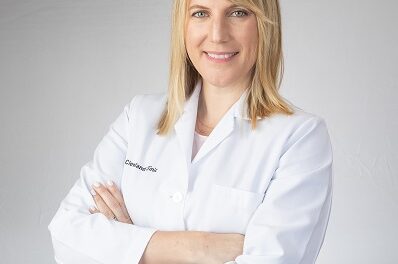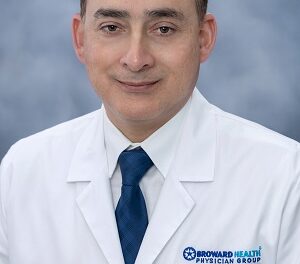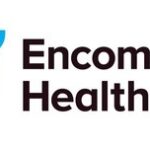 It is fitting that the month of Valentines is also Heart Month. It is also fitting that the time we spend cherishing our loved ones is also the time to contemplate how we can best protect ourselves from heart disease – the leading killer of men and women in the modern world. Research has demonstrated the somewhat remarkable fact that proper application of current knowledge of prevention, even without a single further discovery, would nonetheless permit a dramatic drop in the incidence of cardiovascular disease.
It is fitting that the month of Valentines is also Heart Month. It is also fitting that the time we spend cherishing our loved ones is also the time to contemplate how we can best protect ourselves from heart disease – the leading killer of men and women in the modern world. Research has demonstrated the somewhat remarkable fact that proper application of current knowledge of prevention, even without a single further discovery, would nonetheless permit a dramatic drop in the incidence of cardiovascular disease.
On the surface, it all seems quite simple. Careful study of the population of Framingham, Massachusetts has arrived at distinct and reproducible predictors of the future incidence of a manifestation of coronary heart disease–anything from the new incidence of angina (ischemic chest pain), to a heart attack, to a cardiac-related death. So today we can take the information obtained in an extremely brief history (about 4 or 5 questions long) with a measurement of blood pressure and a finger-stick lab test – which can be completed within a matter of minutes, and derive the information necessary to predict the 10-yr risk of a cardiac event. The beauty of these now classic risk factorsage, blood pressure, cholesterol profile, smoking status, family history, diabetesis 1) that they are mechanistically linked to the pathogenesis of coronary heart disease, and 2) that treating them can actually lower the incidence of future events.
Clinical reality, however, is never quite so simple. Permit me to illustrate: My LDL is 125. This falls below the classic threshold for treatment in a low risk individual. However, let us say that I am also hypertensive and have a family history of heart disease, or let us say that I am also diabetic. Now I share the same level of risk for future events as someone with known coronary artery disease. Therefore I should try to drive my LDL cholesterol level below 100. How hard should I try? What if diet and exercise are not sufficient to do it? Now I have the expense and aggregate risk of taking medication. What if I do not tolerate the medication well? What if medication drops my LDL level a little but not a lot? Should I add a second medication, with its additional expense and potential synergistic risk? How hard should I push? Suppose I only have one additional risk factor, such as hypertension, but none other? Now, how hard should I push? In short, we begin to see that this simple predictive risk model, while extremely accurate and reproducible, falls short of directing therapy in an intermediate risk patient.
Now enter the biomarkers and high-tech scanners. Research has discovered that serum levels of various substances correlate well with cardiovascular risk. Most notable amongst these are C-reactive protein (CRP) and brain natriuretic peptide (BNPso named because it was originally discovered in brain, but is much more abundant in the heart). Both have been demonstrated in large population studies to have incremental predictive power even when traditional risk factors have been accounted for. Both are also very appealing because they appear to be related to the actual process of the disease. CRP is a measure of inflammation, and now that atherosclerotic coronary artery disease is recognized to be an inflammatory process, this marker may well not only be a byproduct of the process, but may even be an active “player.” Likewise, BNP is a hormone secreted by the heart in response to stretch applied to myocardial fibers, and thus may well track the course of the failing heart (even long before any clinical manifestation of heart failure). Very nice. Only problem? Several large well-conducted studies have now demonstrated the painful statistical fact that although these and other markers may be very revealing for a population, they may contribute little or no additional predictive power to the Framingham model.
Likewise, advanced CT and MRI scanning hold the promise of discovering coronary artery disease at an early phase, when it is not apparent on any of the classical imaging modalitiesnot even the classic “gold standard”: the coronary angiogram. This early detection might permit the discovery of disease at a time when aggressive risk factor treatment might even reverse the disease. Excellent! Only problem is that our technology has surpassed our clinical knowledge of how to use it. Wide application of these modalities might result in exposing large groups of patients to significant expense, radiation exposure and even morbidity (if false positive tests result in further invasive testing or therapy).
Perplexing? Not really. For now, listen carefully to what we knowproper diet and caloric intake, exercise, smoking cessation, weight and blood pressure control, stress management. And let the researchers do the critical work of evaluating each test, its clinical relevance and application. In the future, we will not only be able to improve the predictive value of our screening from the 75% range, but we will be able to specify for each individual what further testing would be most appropriate, and, therefore, what personal choices and therapies will be most critical. And hopefully, with this knowledge, we will be better able to protect our hearts and the hearts of those we love for many, many “Heart” Months to come.
Post Views: 948
 It is fitting that the month of Valentines is also Heart Month. It is also fitting that the time we spend cherishing our loved ones is also the time to contemplate how we can best protect ourselves from heart disease – the leading killer of men and women in the modern world. Research has demonstrated the somewhat remarkable fact that proper application of current knowledge of prevention, even without a single further discovery, would nonetheless permit a dramatic drop in the incidence of cardiovascular disease.
It is fitting that the month of Valentines is also Heart Month. It is also fitting that the time we spend cherishing our loved ones is also the time to contemplate how we can best protect ourselves from heart disease – the leading killer of men and women in the modern world. Research has demonstrated the somewhat remarkable fact that proper application of current knowledge of prevention, even without a single further discovery, would nonetheless permit a dramatic drop in the incidence of cardiovascular disease. 

























